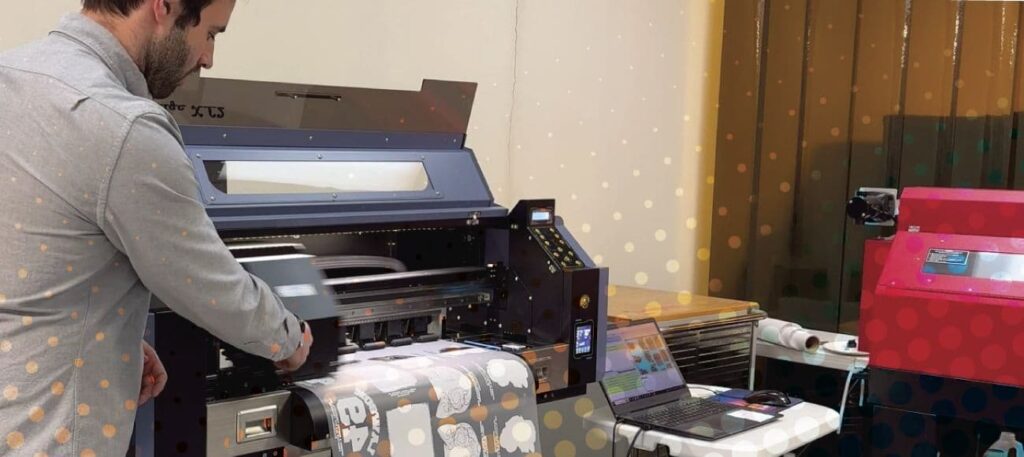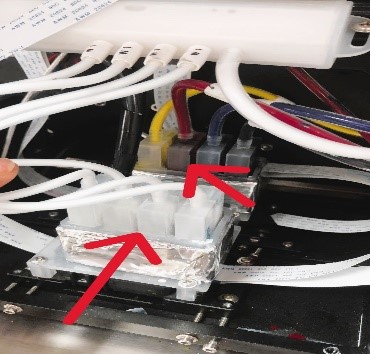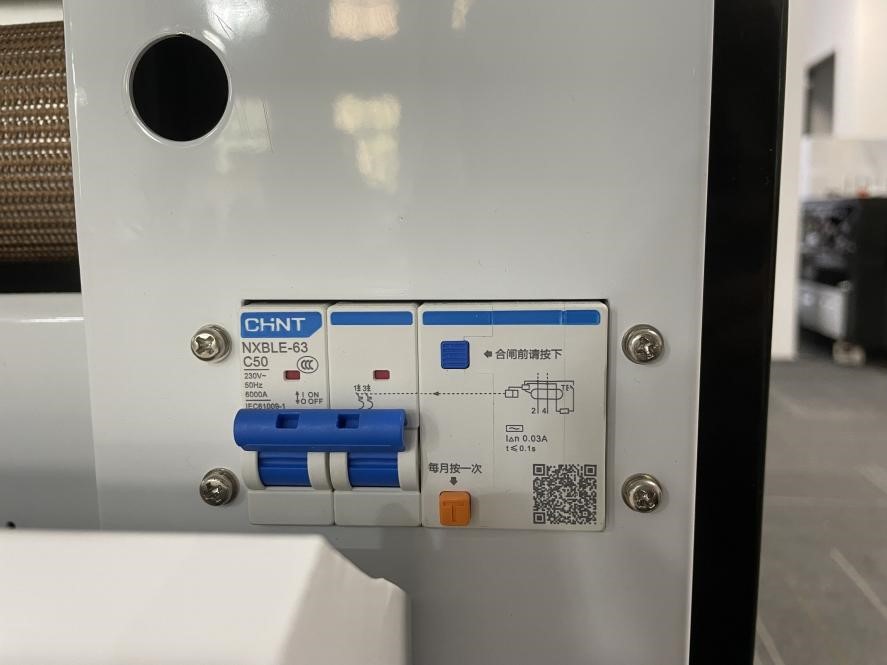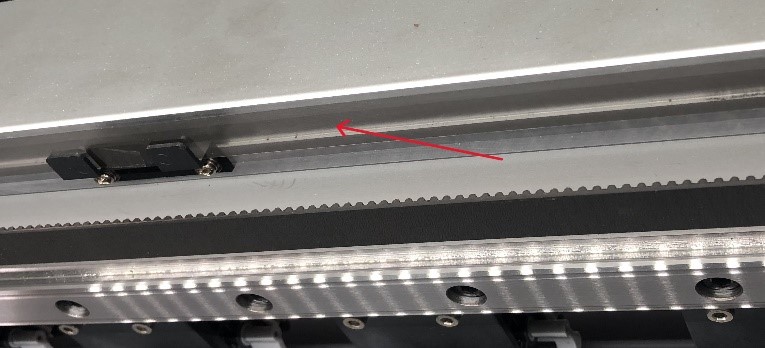
DTF printing is one of the more popular methods of printing on clothing, which, with its simple and practical handling, is widely loved by the public.
However, in the process of daily work, regular maintenance is also necessary to ensure smooth and normal operation of the DTF printer.
The four most important aspects when we talk about the regular maintenance of DTF printers are the system of the print head of the machine, the correct selection of DTF ink, the daily cleaning of the printer table and the environment of the DTF printer.
DTF Printer Printhead System
Moisturizing of the Printhead
The print head of a DTF printer is one of the most important parts, and its precision determines the quality of the print.
A very important detail in the daily maintenance of the print head is to pay attention to the hydration of the same in order to prevent clogging.
Currently, Sublistar DTF new generation STAR series printers can perform online automatic moistening function.
During long breaks, the device can be remotely set to automatically replenish clean water to prevent ink drying and printhead clogging.

Cleaning the ink stack and Doctor Blade
When the machine is finished, clean the ink beam system and then wipe the wiper with alcohol or clean water.
Then clean the ink residue on the wiper groove and cover to prevent the wiper from moving with too much resistance or the appearance of sludge and lint from the remaining ink causing the machine to malfunction.
During the cleaning process, do not drip ink or cleaning fluid on the part of the machine that is in the circuit.
Correct Selection of DTF Ink
The particle size of DTF ink should be compatible with the nozzle of the printhead.
Ink with small particles ensures high fluidity.
The ink and nozzle are the key to proper printing and stable image output, so it is necessary to keep the nozzle in the best printing condition.
Mixing Different Brands of Ink for DTF Printers
There are many brands of ink on the market, and the solvent composition of this inks produced by different companies is not the same.
Different types of inks, different series of inks for mixed use, slight chemical reaction, all this may cause color change, color shade change and cause nozzle clogging by depositing inks with different particle size.
Low quality ink should be used with caution
The fluidity and reductivity of poor quality ink that is not up to standard, will affect the final printing effect and quality of final product.
The pigment particles are large and burn easily, clogging the nozzle and causing permanent wear, so don’t be greedy to use low quality ink and waste a lot of money for a small reason.
Original Ink Is Recommended
It is best to choose the original ink recommended from the printer manufacturer.
Basically, this ink has been approved by various experiments and tests of long-term use.
It is compatible with the printer nozzle, stable and reliable, and the manufacturer also provides a long-term warranty after the sale.
So the brand Sublistar has already launched an ink that does not need to be circulated or stirred and that will not settle in response to the problem of easy settling and clogging of DTF white ink.
This ink has been tested in the laboratory and can achieve good printing results.
Cleaning the desktop of the DTF printer
Shutdown and Sealing
Fill the ink stack with clean water in a timely manner to ensure that the rest of the ink in the stack is not firmly stuck to the nozzle.
It is good to ventilate if possible because the air gives full power to the hydration function to prevent clogging of the nozzle.
It is recommended to replace the ink stack on every 3 months.
Power Failure Protection
Before replacing parts or maintaining the printer, remember to turn off the power to the printer and do not install or disassemble the printer at will while the power is on.

Removal of foreign objects
It is strictly forbidden to put other foreign objects in the printing platform of the printer, except for paper supplies, because otherwise it will cause damage when moving the nozzle.
Clean the part of the shaker
Every day before and after starting, pay attention to the operation of the dithering part of the DTF machine.
Due to the special characteristics of DTF PET film, in the daily printing and drying process, silicone oil will inevitably leak out, which can drip onto any part of the dithering machine.
So, after the machine prints, use a clean cloth to wipe the oil in time to make sure the machine is clean.
DTF printer environment
Prevent static electricity
Reasonable storage of consumables is required to avoid frictional current.
Before using the machine, be sure to connect the ground wire and wear protective gloves when touching the nozzle.
Voltage Stabilization
In a processing workshop that involves various types of large machines, it is recommended to configure a high-power voltage regulator to ensure a stable output voltage during printer operation, so that the production and processing of the DTF printer is more stable.
Ensure Indoor Cleanliness And Temperature And Humidity
The enclosed space must be clean, the printer nozzles, printed circuit boards and other components must not come into contact with dust, as this would cause electrostatic interference and clogging of the nozzles.
Pay attention to the temperature and humidity around the DTF printer.
The temperature should be 15-30°C, and the air humidity should be between 40% and 60%.
If the environment does not meet the requirements, you can configure air conditioners, dehumidifiers, fans and other equipment to improve the working environment.
It is recommended to turn on the function of heating of the print head or heating the ink bladder if temperature goes below 15 degrees and set the heating temperature to 25 ℃.
Doctor Blade Cleaning
A wiper in a DTF printer plays a role in cleaning the surface of the nozzle, it is usually placed under the nozzle, to the left of the ink stack.
If the printer scraper is damaged, it is easy to cause the printer to break due to ink and other phenomena, iso t is recommended to replace it every 3 months.
Other small details about cleaning
Grid (transparent film behind the cart frame), the cart is moving left and right on the grid, playing a role in positioning.
Long-term use will produce some scratches or dirt, so it needs timely cleaning.
It is recommended to replace once every 6 months.

The THK guide, equipped with high-precision ultra-quiet double slides, ensures the stability of the cart’s movement.
The parallelism between the support and the mounting surface of the printing frame is within 0.05mm, which greatly improves the printing accuracy.
Monthly lubrication is recommended.
White ink filter, inside the filter there is a filter that can filter the impurities in the ink and play the role of filtering the ink.
In order to ensure a smooth ink supply, it is recommended to replace it every 3 months.
According to actual use, it is recommended to replace the white ink diverter every 12 months.
The above is a more complete compilation of points to keep in mind for routine maintenance.